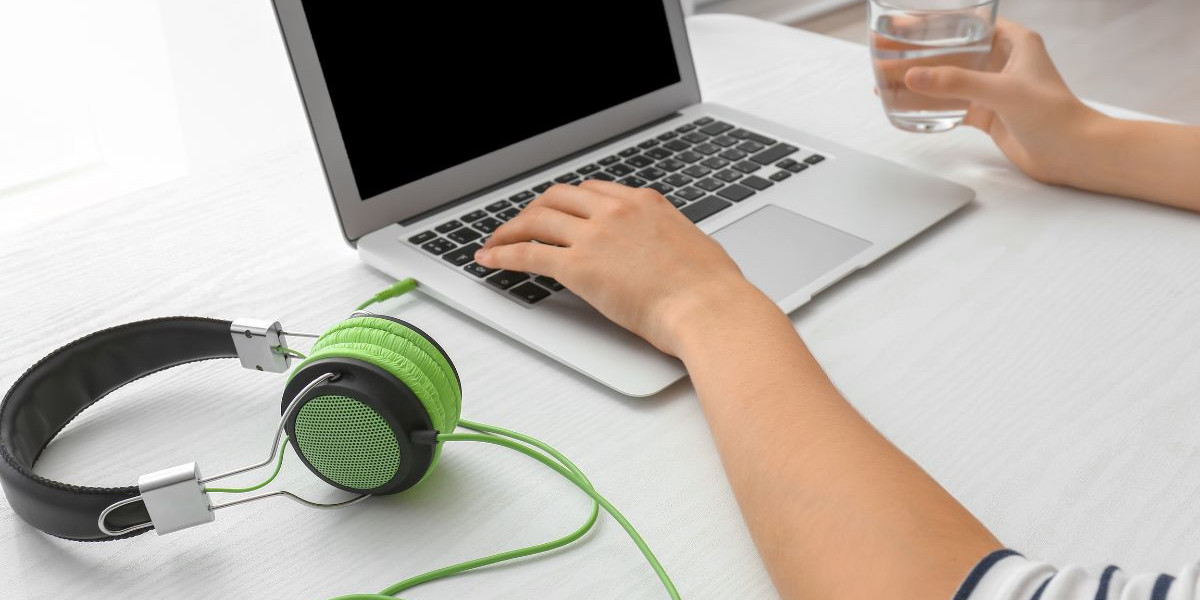Worried your favorite headphones might be doing more than just playing great music? You're not alone. The question, "can wearing headphones cause hair loss," is on a lot of minds as people spend more time using headsets for work, calls, and workouts.
While it might sound alarming, science says true hair loss from headphones is rare. But it's smart to know what’s fact and what’s myth, especially with habits we repeat daily. In this blog, you’ll get clear, science-backed information and real tips you can use right away to keep both your tunes and your hairline secure.
Ready to find out what really matters? Let's break down the facts, explore common concerns, and share practical ways to protect your hair—without ditching your headphones.
Understanding Hair Loss: Causes and Common Misconceptions
 Photo by Towfiqu barbhuiya
Photo by Towfiqu barbhuiya
Seeing hair on your pillow or in your brush can be unsettling, especially if you feel like it's happening more often. No wonder so many ask, “can wearing headphones cause hair loss?” Before diving into the science behind that, let’s break down the real causes of hair loss and clear up a few stubborn myths.
Main Causes of Hair Loss
Not all hair loss points to the same issues. It usually comes down to a mix of factors, both internal and external. Here's what’s most common:
- Genetics: If thinning hair runs in your family, there’s a good chance genes play a large role.
- Hormonal changes: Conditions like pregnancy, menopause, or thyroid problems can throw off your body’s balance and affect hair growth.
- Stress: High stress can push more hair into a “resting” phase so it sheds faster.
- Illness or medication: Some medical conditions and treatments, like chemotherapy, are known triggers.
- Physical tension or damage: Tight hairstyles or constant pulling can cause something called traction alopecia.
- Poor nutrition: Lack of protein, iron, or key vitamins can slow or disrupt growth.
While headphones do sit against your scalp, there’s little evidence that simply wearing them leads to hair loss, unless they’re causing physical tension or friction.
Common Misconceptions About Hair Loss
It’s easy to fall for hair myths, especially when searching for answers online or chatting with friends. Let’s address a few you might have heard:
- Myth: All hair breakage is hair loss.
Losing a few hairs here and there is normal. True hair loss (as in balding) usually starts at the root, while breakage can be caused by dry hair, heat styling, or harsh brushing. - Myth: Only men experience hair thinning.
Women deal with it too—sometimes in a different pattern, but it’s just as common. - Myth: Shampooing every day makes you bald.
Not true. Daily washing doesn’t pull out hair at the root. You’re just seeing hairs that have already let go during the natural growth cycle. - Myth: Wearing hats, helmets, or headphones always causes hair to fall out.
Regular use of headphones or hats does not directly lead to hair loss for most people.
For a deeper look at the myth around headphones specifically, see this section about the effects of wearing headphones on hair.
It’s easy to blame external things like headphones when you notice more hair in your comb, but most causes are internal or related to how you treat your hair and scalp.
By busting these myths, you can focus on what really matters for hair health and make choices based on facts, not fear.
Can Wearing Headphones Cause Hair Loss? Scientific Insights and Medical Opinions
Wearing headphones for long study sessions, remote work, or a music marathon can spark concerns if you’ve spotted more hair on your brush. The question, "can wearing headphones cause hair loss," has become a hot topic as more folks wear them hours a day. Let’s get to the bottom of what science and doctors actually say.
What the Science Says About Headphones and Hair Loss
Scientists and hair experts largely agree: the average person will not lose hair just from using headphones alone. Most studies and expert commentary point out that true, widespread hair loss is unlikely from standard headphone use.
- No direct link found: Current research has not established a solid link between casual headphone use and hair loss in healthy users. According to the Wimpole Clinic, hair shedding from headphones isn’t supported by scientific studies.
- Friction and tightness matter: The medical term traction alopecia refers to hair loss caused by repeated tension or pulling on hair. If your headphones are very tight or always rub the same spot, friction and pressure can irritate your scalp and possibly contribute to localized thinning over time. This isn't unique to headphones—it's the same problem seen with tight ponytails or hats.
- Frequency and fit: Experts warn that wearing a very tight headband for hours every day can cause scalp irritation. The key factor is pressure and friction, not headphones themselves. Occasional use, or headphones that don’t hug your head too hard, pose minimal risk.
Medical Expert Opinions
Doctors and dermatologists are fielding these questions more often. What’s their take?
- Medical consensus: The verdict is clear among professionals—using headphones isn’t a common cause of hair loss for most people. Dermatologists at Kalon Dermatology and other clinics highlight that only ill-fitting, consistently tight headphones could possibly lead to a mild, temporary form of traction alopecia.
- What about earbuds? In-ear headphones or earbuds, popular for daily activities, don't create pressure on scalp hair at all. That means they're not linked with any form of hair loss.
- Risk is low for most users: Even for over-ear headphones, the risk is low unless you routinely press them tight enough to leave marks or discomfort. If you are prone to scalp sensitivity, swapping for a looser fit or alternating styles may help. For more expert perspectives and a deep-dive FAQ on the topic, check out this guide from Clinic Hunter.
Factors That May Raise Hair Loss Risk from Headphone Use
While the typical listener doesn’t need to worry, here are situations that might raise some risk:
- Very tight or heavy headphones worn daily
- Wearing over the same spot for extended hours
- Scalp already irritated or experiencing another condition
- Existing hair thinning or fragile hair texture
If you fall into any of these categories, or you notice scalp soreness, try loosening up your headset or giving your hair and skin regular breaks.
How Headphone Design Affects Your Scalp
Some styles are naturally more gentle:
- Cushioned, adjustable headbands: These spread out pressure for comfort.
- Lightweight construction: Less weight means less strain on your scalp.
- Earbuds: No contact with scalp hair, no risk here.
Choosing headphones that fit well and don’t create pressure points can help minimize any risk. For practical tips and a closer look at headphone-friendly hair habits, check out this resource on avoiding traction alopecia from everyday items.
 Photo by Sound On
Photo by Sound On
While it's wise to rethink a headset that feels too tight, casual headphone lovers can enjoy their playlists in peace. Science makes it clear: for most, headphones don't need to be on the hair loss worry list.
How Different Types of Headphones May Impact Hair Health
When thinking about "can wearing headphones cause hair loss," it’s easy to lump all headphones together. But the truth? The design and style of your headphones can play a big part in how they affect your hair and scalp. Some create almost no risk, while others—especially if worn tight or for long stretches—may put some extra pressure on the same areas, leading to possible irritation or breakage. Let’s break down how different headphone types and fits can impact your hair health.
 Photo By: Kaboompics.com
Photo By: Kaboompics.com
Over-Ear Headphones: Comfort Versus Coverage
Over-ear headphones are popular for their sound quality and comfort, but their fit matters for your hair. Large, cushioned ear cups and a padded band spread the weight across your scalp. That means less risk for most people—the pressure isn’t focused in one spot.
However, if you crank the band tight or wear them for hours at a time, over-ear headphones can compress hair and rub certain areas of your scalp. This might cause minor irritation or hair breakage, especially if you notice a “dent” or pressure mark after wearing them. According to medical advice from Kalon Dermatology, repeated tightness could irritate hair follicles and even contribute to mild traction alopecia if used incorrectly.
Pro tip for hair health:
- Go for an adjustable, cushioned band.
- Take regular breaks, especially if you start to feel discomfort or hot spots.
- Switch up position, so the same area isn’t under pressure all day.
On-Ear Headphones: More Friction, More Risk?
On-ear headphones, as the name suggests, press directly on your ears and the hair around them. They’re smaller and more portable than over-ear models, but their smaller pads can focus pressure right where the headband meets the scalp.
Features that might cause problems:
- The smaller contact area increases friction if the bands press down harshly.
- Hair can get caught between the earpad and scalp.
- Prolonged use in the same position is more likely to irritate or break hair strands.
This doesn’t guarantee hair loss, but constant friction on fragile or thin hair can make issues show up faster for some people. Reviews from users and additional insights in this FAQ on can headphones cause hair loss point out that rotating your headset and loosening the fit can keep the risk low.
In-Ear Headphones and Earbuds: No Contact, No Concern
Earbuds and in-ear headphones sit in your ear canal, skipping hair and scalp altogether. They don’t cause tension, friction, or pressure on hair follicles, so for anyone worried about "can wearing headphones cause hair loss," these are the safest bet from a hair health perspective. You won’t see dents, pressure, or local thinning with these, since they don’t touch your hair at all.
If in-ear headphones cause any irritation, it’s not going to involve your hair—only your ear canal if hygiene slips.
Headphones with Hard, Non-Padded Bands: A Hidden Danger
Models with hard, unpadded bands can press harder into your scalp. That extra pressure, especially over fine or thinning hair, may lead to discomfort, breakage, or local redness.
If you’re using these styles and spot a red line or hair that looks broken in the middle of your scalp, swap to a padded or more flexible alternative.
Other Headphone Factors That Matter
It’s not just over-ear versus in-ear—the fit, daily habits, and personal hair type can all play a part. Consider these elements:
- Headphone tightness: The tighter the fit, the more pressure and friction, raising the risk of irritation.
- Material: Leather, faux leather, or other synthetic covers may snag or pull hair more than softer cloth pads.
- Wearing habits: Using headphones for hours without breaks puts your scalp under stress. The risk multiplies if you’re already dealing with hair breakage or a sensitive scalp.
Evidence gathered by Hims supports what many dermatologists have stated—traction (tension) and not simply the act of wearing headphones is the real concern.
Choosing the Right Headphones for Hair Health
If you like using headphones every day but want to avoid hair issues, here are a few practical tips:
- Choose adjustable styles with cushioned, flexible bands.
- Avoid clamping the headphones too tightly.
- Use earbuds or in-ear options if you have fine or breakage-prone hair.
- Clean your headphones regularly to keep hair and scalp bacteria-free.
For more detailed guidance, you might find this overview about the connection between headphones and hair health helpful.
Paying attention to the type and fit of your headphones can make all the difference in keeping your hair healthy while still enjoying your favorite playlists or podcasts.
Tips to Prevent Hair Loss While Enjoying Headphones
Wearing headphones is part of daily life for many, whether you’re working, gaming, or catching up on your favorite playlists. If you’ve ever wondered, "can wearing headphones cause hair loss," you’re not alone. The good news is you don’t have to give up your favorite tunes or podcasts. A few simple habits can help protect your hair while letting you enjoy your headphones in comfort.
Pick the Right Fit and Style
Not all headphones are created equal when it comes to hair health. Choosing carefully can make a real difference.
- Prefer adjustable headbands over fixed ones.
- Look for soft, cushioned bands that spread pressure gently.
- Go lightweight to reduce strain.
- If you have fine or breakage-prone hair, consider using earbuds to skip scalp contact altogether.
Learn more about the impact of headphones on hair loss and how choosing the right style can improve scalp comfort.
Adjust Tightness and Position Often
Leaving headphones squeezed tight on your head for hours can create friction and pressure—two things that might irritate your scalp and hair roots.
- Keep your headband loose enough to be comfy, but secure.
- Shift the band’s position every couple of hours so one spot doesn’t get all the pressure.
- If you notice a red line or tenderness on your scalp, it’s time for a break.
You’ll find more about managing headphone tightness in this expert FAQ that covers top prevention tips.
Take Regular Breaks
Even the best headphones need a timeout. Breaking up long listening sessions gives your scalp and hair a chance to recover.
- For every hour of use, set aside a few minutes without your headphones.
- Use these breaks to gently comb your hair and let your scalp breathe.
- Stretch your neck and scalp muscles—it’s good for comfort and circulation.
Practice Gentle Hair Care Habits
Friction from headphones isn’t the only thing that can stress your hair. Mix in gentle care to prevent breakage.
- Avoid tight hairstyles (like ponytails) when wearing headphones.
- Use a detangling spray or leave-in conditioner to keep hair smooth and reduce snagging.
- Brush hair before and after headset use to prevent tangles.
 Photo by Nataliya Vaitkevich
Photo by Nataliya Vaitkevich
Clean Your Headphones and Practice Scalp Hygiene
Dirty headphones can collect oils, sweat, and bacteria—all things that might aggravate your scalp.
- Wipe headphones with a gentle, disinfectant cloth regularly.
- Wash your hair and scalp as needed, especially after sweaty listening sessions.
- Replace worn or cracked padding to avoid rough material rubbing against your hair.
Listen to Your Scalp
Pay attention to any early signs your scalp may not like your headphones. Soreness, redness, or a stubborn “dent” in your hair calls for a change.
- Try different headphone models if irritation keeps popping up.
- Rotate between over-ear, on-ear, and earbuds.
- Give your scalp extra TLC on off days with gentle massages or nourishing oils.
If you want a deeper dive on how headphone use fits into the bigger picture of hair care, check out more hair loss articles for science-backed advice and tips.
Double Down: When to See an Expert
If you stick with gentle habits and still spot unusual shedding or local thinning, consult a dermatologist. Sometimes, hair loss or irritation under your headphones has nothing to do with friction and may point to something medical.
For a lively community discussion with real experiences, see this Reddit thread about headphone use and hair loss.
Sticking to these habits lets you keep enjoying your playlists and podcasts—while keeping your hair looking full and healthy.
Conclusion
Science shows that, for most people, headphone use alone won’t cause true hair loss. The main issues come from constant friction and pressure, not the simple act of wearing headphones. Paying attention to fit, taking regular breaks, and practicing gentle hair care can help you avoid unnecessary scalp irritation or breakage.
Keep an eye on your scalp health. If you notice soreness, redness, or patches of thinning hair after using headphones, adjust your routine or switch your gear. When in doubt, a visit to a dermatologist can rule out other causes and offer peace of mind.
Thanks for reading and being proactive about your hair health. For more answers and ongoing tips, explore related topics that help you stay confident and informed. Your experience and opinion matter—feel free to share your story or join the conversation below.








